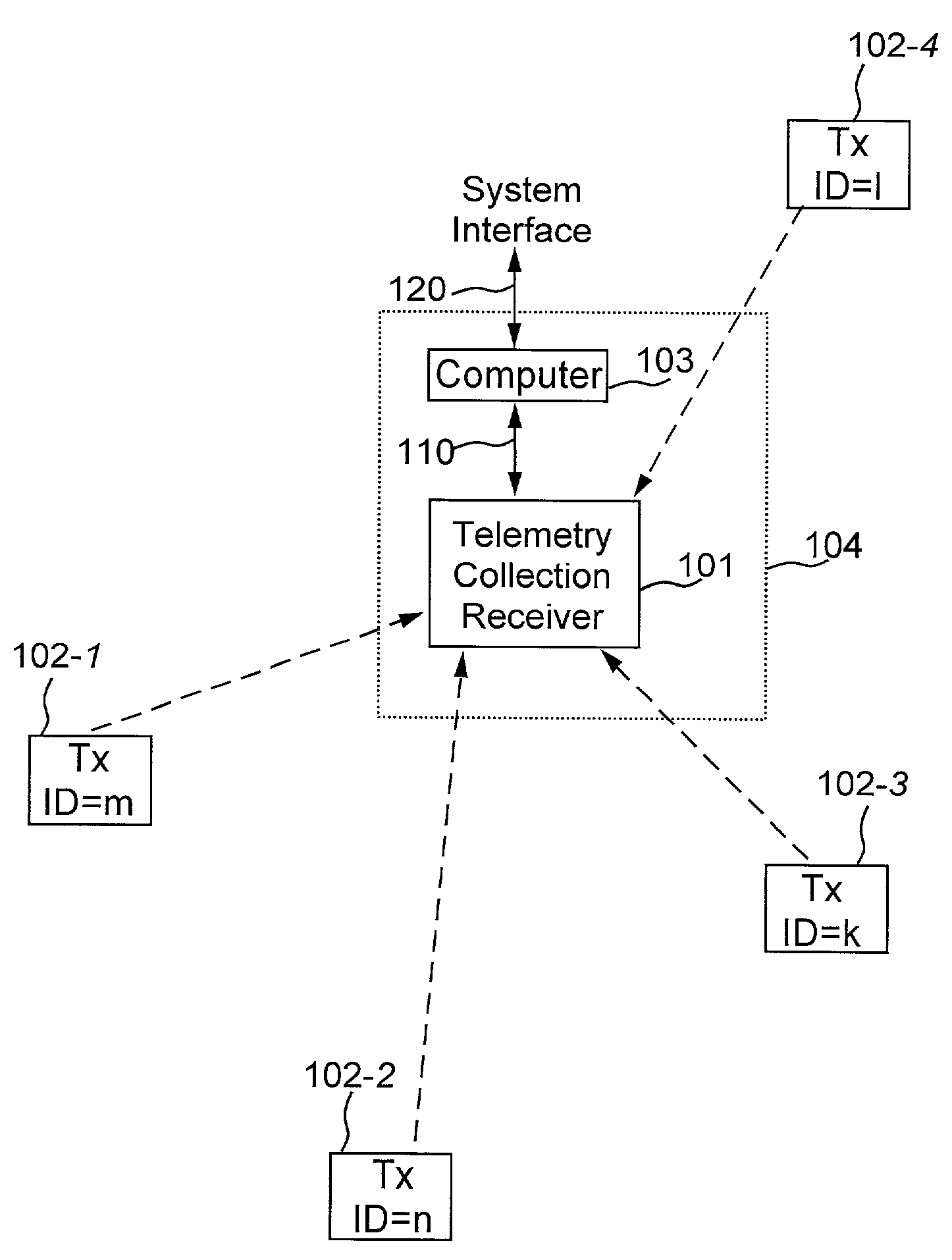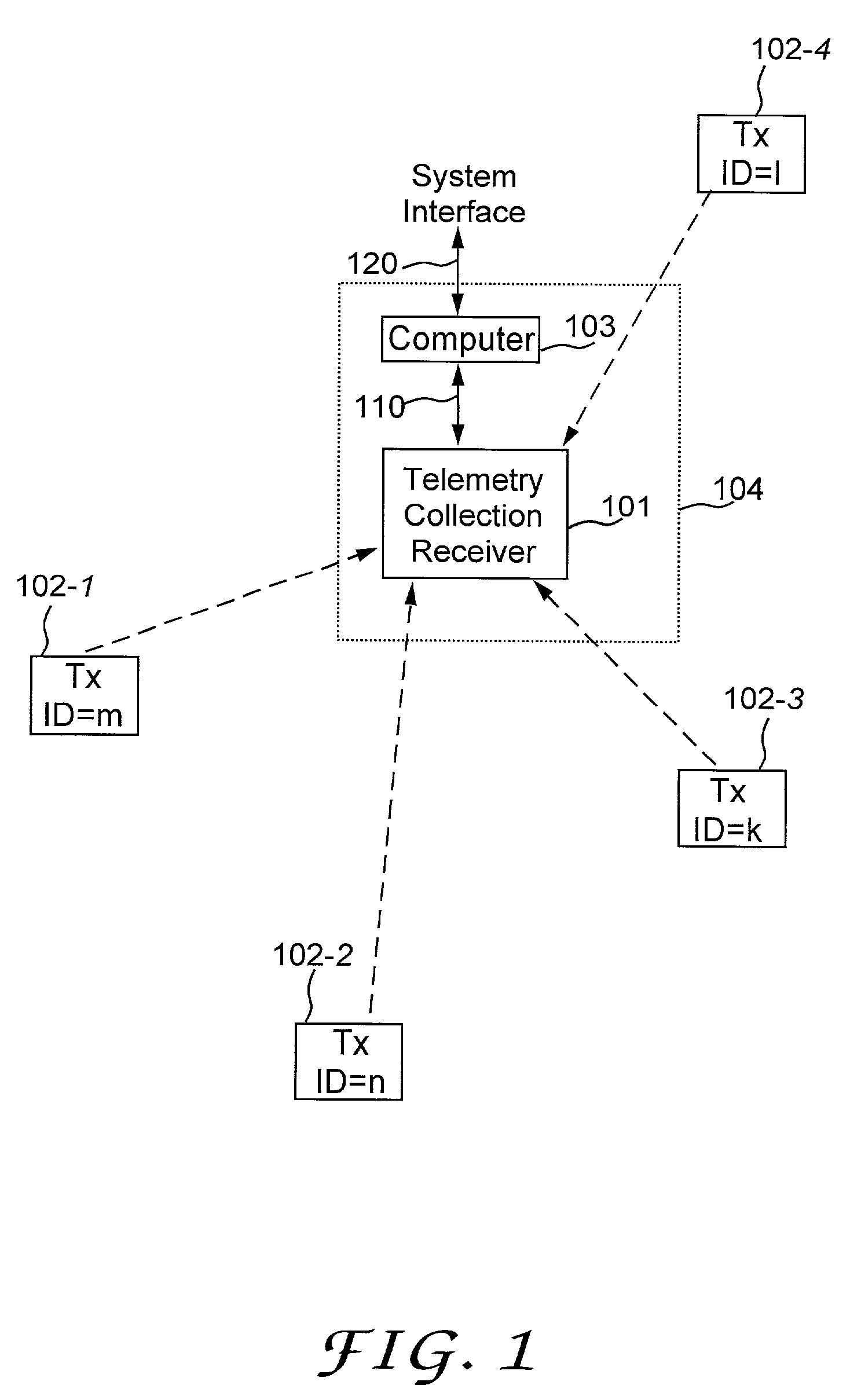Telemetry system with authentication
- Summary
- Abstract
- Description
- Claims
- Application Information
AI Technical Summary
Benefits of technology
Problems solved by technology
Method used
Image
Examples
Embodiment Construction
[0021]Referring to FIG. 1, the frequency hopping system includes a telemetry collection unit 104 and a plurality of remote telemetry transmitters (transmitters) 102-1, 102-2, 102-3 and 102-4. The telemetry collection unit includes a telemetry collection receiver (receiver) 101, and a computer 103 that can communicate the telemetry over system interface 120. The receiver 101 includes a receiver interface 110 through which the receiver can be connected, locally or remotely, to a variety of interface equipment, a controller, or a computer. Each remote telemetry transmitter includes an interface or a sensor or an operation to be monitored. Each remote telemetry transmitter intermittently transmits short messages to the telemetry collection receiver. The remote telemetry transmitters are not connected to each other and do not receive messages back from the telemetry collection receiver. The remote telemetry transmitters transmit messages when they need to without any regard to other remo...
PUM
 Login to View More
Login to View More Abstract
Description
Claims
Application Information
 Login to View More
Login to View More - R&D
- Intellectual Property
- Life Sciences
- Materials
- Tech Scout
- Unparalleled Data Quality
- Higher Quality Content
- 60% Fewer Hallucinations
Browse by: Latest US Patents, China's latest patents, Technical Efficacy Thesaurus, Application Domain, Technology Topic, Popular Technical Reports.
© 2025 PatSnap. All rights reserved.Legal|Privacy policy|Modern Slavery Act Transparency Statement|Sitemap|About US| Contact US: help@patsnap.com



